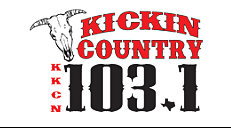
Ice Storms and Trees
Winter storms that coat everything in layers of luminous ice leave a very beautiful but dangerous calling card. We know ice covered trees are susceptible to breakage from the added weight. But if you take a look around your yard, how do you know which of your trees are more likely to give in to the devastation of ice layers?
"There are a number of growth features that increase a tree species' susceptibility to breakage in ice storms," says Tchukki Andersen, BCMA, CTSP* and staff arborist with the Tree Care Industry Association. "Among them are: included bark, decaying or dead branches, increased surface area of lateral (side) branches, broad crowns or imbalanced crowns, and fine branch size."
Included bark results from in-grown bark in branch junctions. This is a weak connection and increases the likelihood of branch breakage under ice-loading conditions. "As an example," says Andersen, "Bradford pear branches are known to break during ice storms; this is because they commonly have included bark in branch junctions. In contrast, the Aristocrat pear has few branches with included bark and sustains less damage during ice storms.
Decaying or dead branches are already weakened and have a high probability of breaking when loaded with ice. The surface area of lateral branches increases as the number of branches and the broadness of the crown increase. With an increased surface area, more ice can accumulate on lateral branches; the greater ice load results in greater branch failure.
Many broad-leafed tree species, when grown in the open, form broad crowns (decurrent branching), increasing their susceptibility to ice storms. Examples include Siberian elm, American elm, hackberry, green ash, and honey locust. Trees with imbalanced crowns are also more susceptible to ice damage. Generally, though, susceptibility can vary greatly depending on the time of year, geographic location and overall health of the tree.
Ice storm damage management and prevention: Plan, then plant
Think about your future. When planting a new tree in your yard, you should have a clear understanding of the size that tree is expected to grow. Is it too close to the house? The overhead wires? The sidewalk? Proper tree placement, away from structures, will reduce property damage. Trees should not be planted in locations where growth will interfere with above-ground utilities - branches that grow into power lines and fail during ice storms create power outages and safety hazards.
Trees pruned regularly from a young age should be more resistant to ice storms as a result of removal of structurally weak branches, decreased surface area of lateral branches, and decreased wind resistance. Professional arborists can install cables and braces to increase a tree's tolerance to ice accumulation in situations where individual trees must be stabilized to prevent their failure.
After storm damage has occurred, hazardous trees and branches require immediate removal to ensure safety and prevent additional property damage. Trees that can be saved should have broken branches properly pruned to the branch collar (stubs and flush-cut pruning result in weakly attached sprouts and
future insect and disease problems). Loose bark should be cut back only to where it is solidly attached to the tree. A split fork can be repaired through cabling and bracing.
Tree species resistant to ice damage can be planted to reduce tree and property damage from ice storms:
Find a professional
A professional arborist can assess your landscape and work with you to determine the best trees and shrubs to plant for your existing landscape. Contact the Tree Care Industry Association, a public and professional resource on trees and arboriculture since 1938. It has more than 2,000 member companies who recognize stringent safety and performance standards and who are required to carry liability insurance. TCIA has the nation's only Accreditation program that helps consumers find tree care companies that have been inspected and accredited based on: adherence to industry standards for quality and safety; maintenance of trained, professional staff; and dedication to ethics and quality in business practices. An easy way to find a tree care service provider in your area is to use the "Locate Your Local TCIA Member Companies" program. You can use this service by calling 1-800-733-2622 or by doing a ZIP Code search on www.treecaretips.org.
* Board Certified Master Arborist, Certified Treecare Safety Professional
More From 103.1 KKCN









